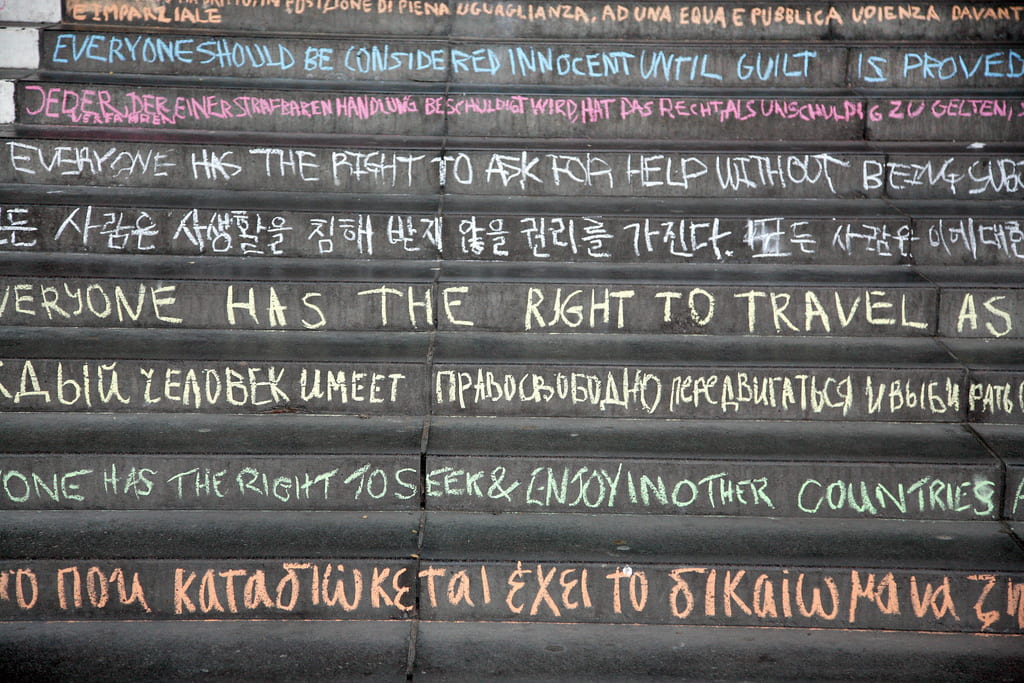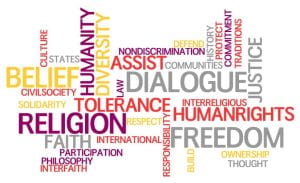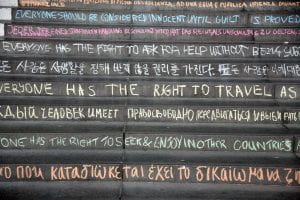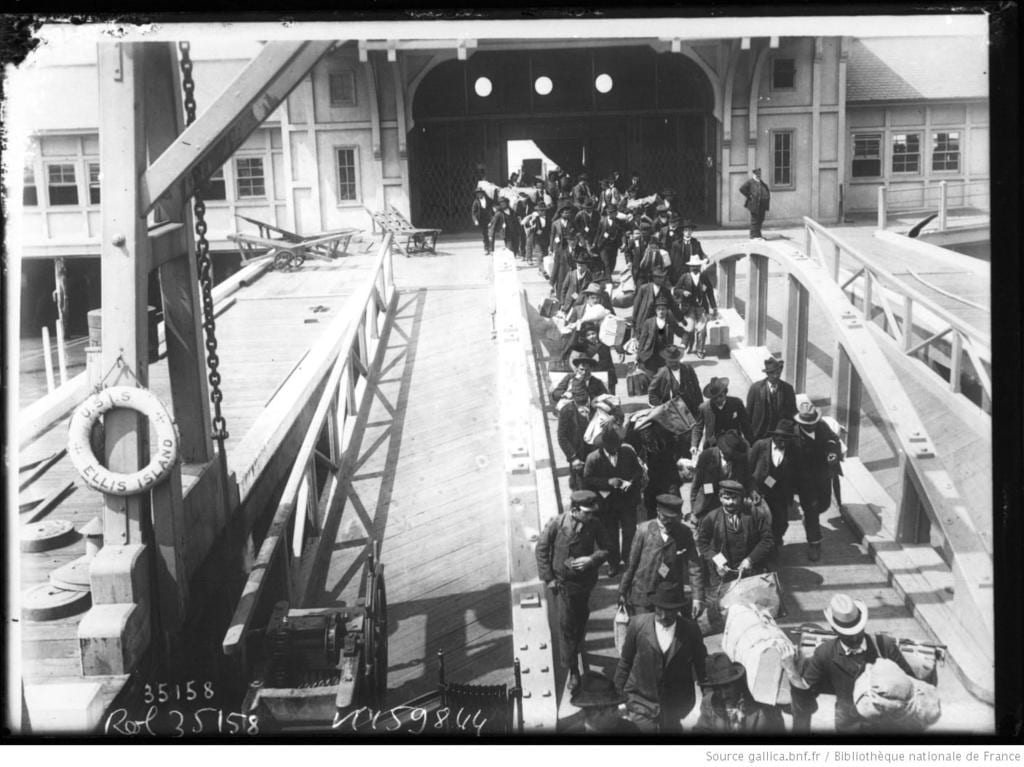
The issue of immigration in America is one that is divided on so many fronts, and recognizing this division, political leaders have exploited the public’s conflicting views to push their own political agendas. Immigration has a rich history in this nation, and unfortunately, America has had a very unequal approach to how immigrants are treated. While some immigrants, (including many from Western nations) are treated with great respect and dignity, many of the immigrants that come from Central American nations, African nations, or Asian nations are portrayed by many political leaders in the United States as “criminal” or “coming to the US to steal our jobs.” This has been a tactic used historically since the founding of this nation, and it has led to the racial hierarchy that functions in America to this day. Even today, there have been comparisons drafted between Ukrainian refugees and how they are received versus how refugees from Palestine are treated. Ukrainian immigrants were accepted fully without any concern for space, funding, or any of the other arguments that come up in regard to immigration. Palestinian immigrants, who have been struggling with a similar situation as Ukraine, (where another nation has invaded their own nation, claiming property and lives in the process), continue to deal with political attacks and discrimination simply for being Palestinian immigrants. (For more on how countries value immigrants from different nations differently, read a recent post by my colleague Danah Dibb). This discrimination is also present in how immigrants from Central America are treated, including the fact that children are still being held at the border in inhumane conditions separated from their parents.
Additionally, immigrants have been a source of cheap labor for industries since the founding of America. At first, there were indentured servants and slaves that helped build the economic success of America early on. Yet, after slavery was abolished and indentured servitude was outlawed, industries faced a new challenge to find cheap sources of labor to maintain their profit margins without sacrificing their productivity levels. This has led to industries using the modern-day prison industrial complex, (which has evolved slavery and indentured servitude into a legal process), or outsourcing jobs to other poor nations to be able to exploit laborers for their own benefit. Yet, another way that industries have aimed to address their cheap labor needs is through the employment of immigrants, mainly undocumented immigrants who are not protected under American labor laws, and as such, industries can (and do) exploit their labor without any regulations or transparency in the process. Even the process for naturalization and legalization for immigrants is purposefully long and difficult, forcing immigrants to still pay taxes, without receiving any benefits that documented immigrants would receive. Despite the misconceptions of many Americans, immigrants do not take away jobs from the American public; they take on jobs that are generally avoided by most Americans. Also, contrary to the American myth that immigrants are “criminals,” the immigrant population is more rule-abiding than most U.S. citizens. All these facts are relevant to frame the political landscape for immigrants in America. This historical context is necessary for comprehending the full reality of the political stunts that occurred recently in regard to immigrants.
A Bit of Background on Human Trafficking
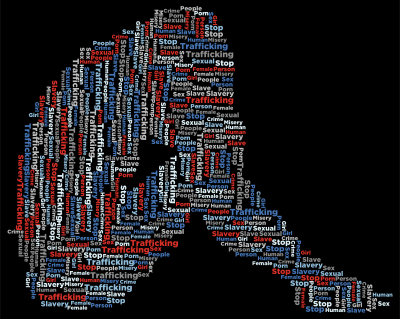
So, what is human trafficking, and what does it have anything to do with immigrants? Let’s begin with the first question, focusing on what it is, the federal laws on human trafficking as well as international and human rights laws that protect people from being trafficked. Human trafficking is the sale and purchase of human beings for the single reason of exploitation, whether it be for the victims’ labor, or for sexual manipulation. According to the human trafficking institute, over 24 million people worldwide are trafficked, of which 20 million are trafficked for labor-related issues, and another 4.8 million are exploited for the sex industry. These victims of trafficking are comprised of men, women, and children, from various nations, and from any and all age groups. Just looking at the numbers for America, it is estimated that around 14,000-17,000 people are trafficked into the United States. This does not even include the people that are trafficked within the borders, and this estimate is based on reported findings, which means that many people being exploited that have not been reported are not included in this statistic. Of course, as it is with any other issue, the more marginalized the group of people being targeted, the more vulnerable they are to being trafficked. Among other fields such as the sex industry, some of the most popular industries that employ people who are trafficked are the agricultural, manufacturing, domestic, and construction industries, which benefit from the cheap labor force. Victims are coerced into being trafficked through a variety of ways, including the threat of physical and psychological abuse to themselves or their family members (which can include sexual abuse, deprivation of food and sleep, as well as shaming and isolating victims from their family members). Traffickers also abuse the legal system to confuse or manipulate the victims, such as withholding their passports or documents and forcing them to comply with the trafficker’s rules. Immigrants and refugees are especially vulnerable, because they come from another nation, and most of the time, don’t speak the language of the country they are exploited to, are not familiar with that country’s laws, and are also threatened with deportation back to the country they escaped from fearing for their lives.
What protection do people have under the law against being trafficked?
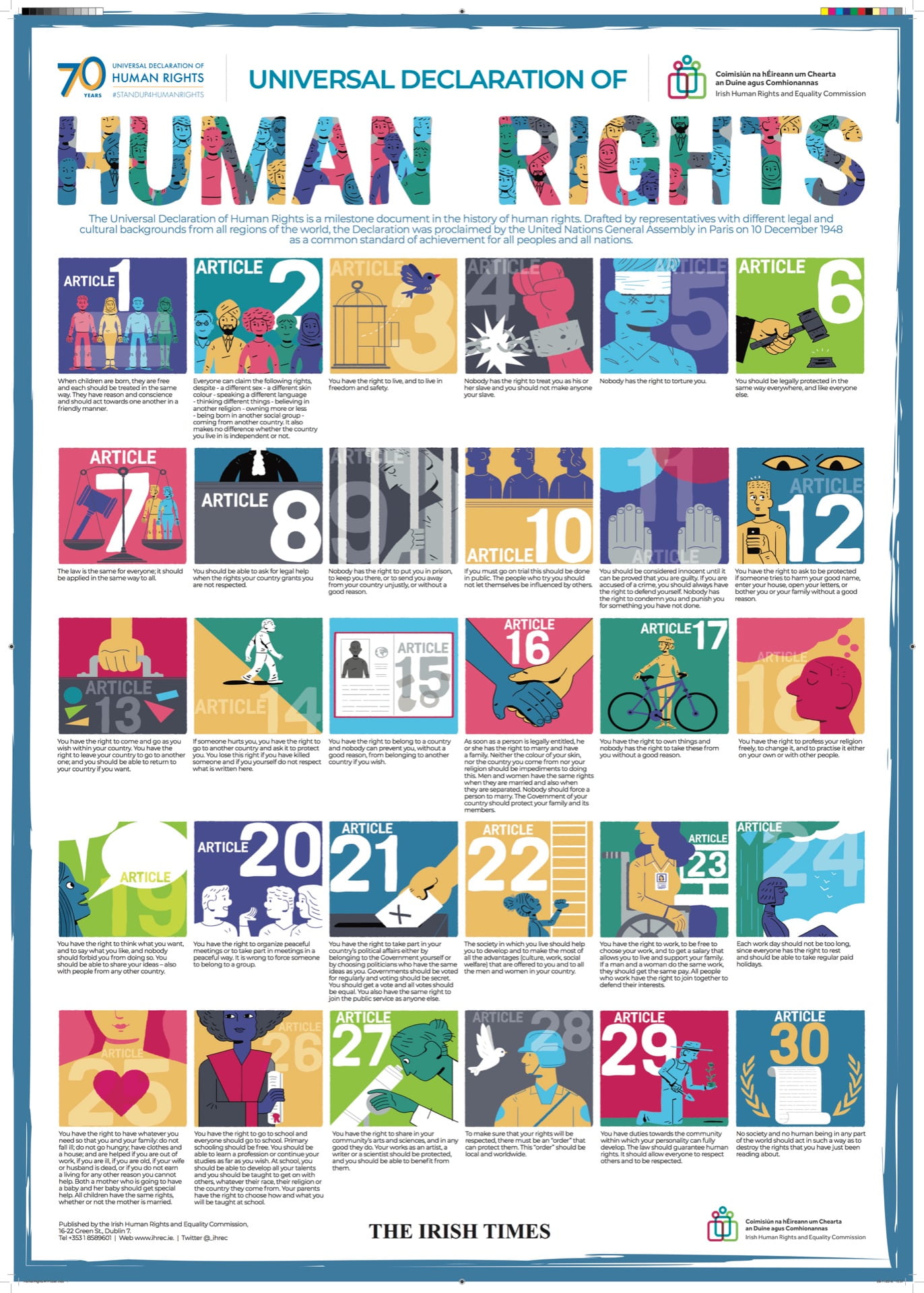
Under most nations’ laws, human trafficking is a heinous crime that can result in serious punishment for those who participate in criminal activity. Protected by the Universal Declaration of Human Rights (UDHR) under Article 4,slavery and forced labor are prohibited. States that have ratified the UDHR are under a bounded obligation to protect the rights outlined in the UDHR. The United States has only selectively ratified the rights outlined by the UDHR, and as such, any issues of accountability they might face for any violations of the UDHR can become complicated. The United States does have its own laws against human trafficking, and according to the American state department, they have made it one of their policy priorities. One such legislation passed in 2000 to address this issue was the Trafficking Victims Protection Act, which put into place an updated legal framework that focused on the protection, prevention, and prosecution of human trafficking. Additionally, to better define who falls under the victimhood of trafficked individuals, the A-M-P model was proposed, focusing on the Action, (how the trafficker approached the victims), Means, (what strategies the trafficker employed, mainly force, fraud, or coercion), and the Purpose (for sexual exploitation or labor exploitation) for the trafficking of individuals. This framework helped the legal system better understand not only how the people were trafficked, but also defined the why. With all this being said, let us now move on to the issue of two political leaders, Ron DeSantis of Florida, and Gregg Abbot of Texas, who engaged in the trafficking of migrants across state borders to stage political stunts, in the process of uprooting the lives of many vulnerable immigrants.
Case of Greg Abbot and Ron DeSantis Transporting Migrants Across States
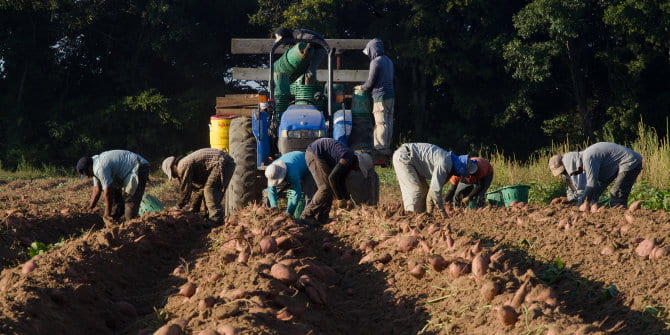
The Republican governor of Texas, Greg Abbot, in an attempt to make a political statement regarding the United States immigration policies, began loading up busses full of migrants he picked up at the US-Mexico border to then be transported to the houses of his party’s opponents, such as Vice President Kamala Harris. He also proceeded to send busses into cities that are led by Democrats, such as Chicago, Washington D.C., and New York City, arguing that the borders were not secure enough and that the United States allowed too many immigrants into the country. While this argument is far from the actual truth, Abbot is not the only political leader spouting this hateful rhetoric. The cruel tactics that were used were originally made popular by former president Donald Trump in 2019, who envisioned a much more sinister approach to collect all the “rapists and criminals” and “bus and dump” them in blue states to stoke fears against immigrants. The trafficking of migrants has been put into practice many times since then, by political leaders from his own party acting on the former president’s ideas.
Similarly, the Republican governor of Florida, Ron DeSantis, also put into practice Trump’s “bus and dump” tactic but using a private plane this time, to fly migrants to Massachusetts, a state he claims is a “sanctuary state,” (which means these states or cities have an understood policy, whether written or unwritten, to protect the reporting of immigrants and their status to law enforcement, unless the individual is under investigation for a serious crime). In this latest stunt pulled by DeSantis, with the help of an individual identified as “Perla” (Perla Huerta, who is said to be a former counterintelligence agent for the US Army in Afghanistan and Iraq), rounded up 48 migrants in San Antonio, Texas, mostly from Venezuela, and lured them under false pretenses of new opportunities of employment and survival, to board the flight that landed in Martha’s Vineyard. These migrants were handed brochures that came from the Massachusetts Refugee Benefits center (which was made up), and had presented information on the pamphlet which they had copied from the real office for immigration services, Massachusetts Office of Refugee and Immigrants (who had no idea about any of these events). This brochure included “benefits” that the migrants were wrongly led to believe they would be eligible to receive and were flown to Martha’s Vineyard in Massachusetts. These benefits included promises of eligibility to receive up to eight months of cash assistance, housing assistance, food, clothing, and transportation assistance, and even help with childcare and education. Not knowing that these were only eligible for documented immigrants that had already been granted asylum, many of the Venezuelan asylum seekers (who had not been granted asylum by the United States) were misinformed and manipulated.
So, what happened to the migrants in both these cases?
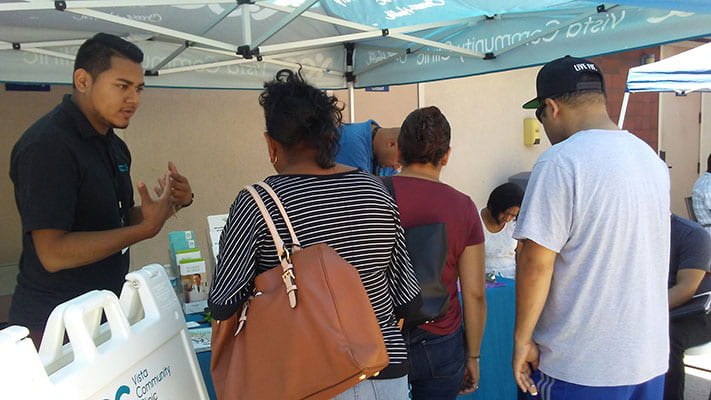
Despite the belief by both Abbot and DeSantis that these migrants would not be well-received, the people from the cities where the migrants were dropped off took it upon themselves to ensure that the migrants had adequate food and shelter arrangements as the issues of what to do moving forward were being decided upon. Chicago, one of the cities which received the waves of migrants sent by Governor Abbot, went out of its way to ensure that the migrants’ needs are being met and that they receive the medical care and legal advice they need as they await their fates. Similarly, in Massachusetts, Governor DeSantis’s plan was to drop the migrants off at the foot of a community center and they were told to knock to receive help. No one knew what was happening, but the entire community around Martha’s Vineyard came together to help feed and clothe the migrants. The 48 migrants later ended up at the military base in Cape Cod, using the military’s empty barracks for places to sleep.
If the actions of governors DeSantis and Abbot are run through the A-M-P model discussed earlier, the purpose of these stunts would be the only aspect that might be hard to judge from a legal perspective. The actions the two governors took would clearly fall under the transporting criteria of the first step, and their means would include both fraudulence and coercion for the second step. Although their purpose was of a political nature, they still rounded up migrants through fraudulent means to be migrated forcefully out of their current residence, without a proper place to be sheltered and provided for. While DeSantis dropped the migrants off at Martha’s Vineyard and forced the people there to deal with the aftermath, Abbot transported the migrants to the doorstep of the houses of his party’s political opponents. These actions, if committed by someone, not in a position of political power, would have led to the person facing severe legal repercussions. Yet the two governors have doubled down on their actions, proudly taking responsibility for the stunts, and Abbot even promises that more migrants are on their way, implying that he is not yet finished.
Update: Migrants file lawsuit against DeSantis

Still, DeSantis might face some form of accountability for his actions, as the 48 migrants he flew to Martha’s Vineyard have filed a civil lawsuit against him, claiming that in the process, he violated the fourth and fourteenth amendments as well as many federal laws. The attorneys, on behalf of the migrants filing the lawsuit, are calling on DeSantis to be banned from repeating this political stunt again and are asking for DeSantis to pay for the damages caused to the migrants as a result of his actions. DeSantis came out protesting this accusation, claiming that his actions were legal because he had obtained signed consent forms from all the migrants who boarded that plane. He also alleged that this was not an act of coercion but that the migrants willingly took the journey to Martha’s Vineyard. However, most of the migrants claim they did not know where they were being taken to, only that they were promised good employment opportunities and a chance at a better lifestyle. Many of the migrants that were coerced into getting on the plane did not even speak or understand English. Additionally, there have been updates provided that the funds for these political stunts pulled by DeSantis came from public, tax-payer funds, meaning that this is also a case of misappropriation of state funds. Some legal experts are even proposing that these political stunts can be categorized as “kidnapping” because the victims were moved from one place to another without knowledge about where their destination was going to be. We will have to wait and see how this lawsuit plays out, mainly on the issue of whether there will be any accountability for people in positions of political power.
What now?
So, while we await the final verdict from the courts, what can be done to ensure this doesn’t happen again? For one, we could put immense public pressure on the two political leaders using a tactic known as “naming and shaming” to discourage them from pulling similar stunts in the future. However, many people that support these politicians, mainly the Republican base, have applauded the two governors’ behaviors, doubling down on their anti-immigration stances. In a society that continues to become more polarized, “naming and shaming” might have the opposite results than expected. Additionally, another step that can be considered is impeachment, or even banning the two politicians from holding office again. Some people might say this may be a drastic move, but if, as an elected official, you are irresponsible with so many human lives, including those of children, where you think it is okay to treat others with disrespect and ignominy, then you should not be allowed the opportunity to serve a position that would put you in charge of people’s well-being.
Another approach would have to come from the international community, mainly the international criminal courts, in an attempt to hold these individuals accountable for violation of human rights. This too, however, might not be as easy as it seems. For one, the federal courts would have jurisdiction before the international courts, and even still, in 2002, then President George W. Bush “unsigned” the Rome Statute, and a few months later, Congress passed the American Servicemembers Protection Act, which forbade the US from assisting or supporting the ICC or any member states that support the ICC. Further, it granted the president full power over securing the release of any US person, or allies that are held or imprisoned by the ICC. Although there has been renewed interest in revisiting this legislation, from an unlikely individual at that (Lindsey Graham), this support might not extend as far as investigating members of his own party. America has long struggled to hold its political leaders accountable, whether it be for war crimes committed by past presidents, or even for simply acknowledging historical atrocities that have occurred in the nation’s past. However, without proper accountability for these heinous political stunts, the two governors would set a precedent for the worse treatment of migrants in the future.

